1) 
2) Lead by example. We have an unprecedented opportunity to set a calm tone, and stay flexible and resilient — for our ourselves, our families, clients and others who we impact on a regular basis. Yet it’s human nature for fear and anxiety to snowball, derail us, and cascade into “catastrophizing.” This is a natural response rooted in self-preservation. However, times like these give leaders an opportunity to be a light during turbulent times. It’s like training a muscle, but we can choose to practice and share “realistic positivity,” so that even if we cannot control the situation, we can control our response to it.
To reinforce the mindset of this kind of realistic optimism, you might find this Scary Times Success Manual (View Here) useful throughout the weeks ahead. It’s from an organization called Strategic Coach that helps entrepreneurs stay positive and find opportunity in adversity.
3) Prioritize self care. In times like these, attention to self-care is also critical, so we can be in a better position to bounce back in the face of challenges. Here are a couple things that can help you stay present and healthy as things are changing by the moment:
- Reach out to others. Ask how you can help friends, family members or co-workers. You’ll feel more connected — especially during today’s self-isolation mandate!
- Focus on making progress. In a crisis, the real risk is doing nothing. Taking action counteracts feelings of helplessness. When the status quo breaks down, try something new. Learn new skills, exercise more, try a new recipe, take up a new hobby, create new filing system.
- Practice gratitude. Fear and gratitude can’t coexist, so practice mentally flipping the switch to what’s good and positive daily — or what you CAN do versus what you CAN’T.
- Look for opportunities. Although the coronavirus has caused massive difficulties, which have to be problem-solved on a daily or even hourly basis, it also opens the door for possibilities, such as new products, markets, strategies, and innovations. It creates an environment that, under normal circumstances, is nearly impossible to replicate. Case in point: Digitizing the workplace has moved from a trend to a new reality for many businesses. Or, families having the opportunity to get off the treadmill, spend more time together and deepen their bonds.
- Practice the basics. Sleep, diet, exercise, mental state — if we are going to be the best for others, we have to be the best for ourselves.
4) Carefully manage your cash flow. Here are some steps that can be taken to help you manage in the short-term:
- Slow down or eliminate expenses, including all non-essential spending (i.e. meals or travel).
- Revise your forecasting out 1-3-6 months to ensure you’re adjusting to the changing dynamics affecting the business.
- Examine your lines of credit, and ensure there will be enough given your worst case scenario over the next 1-3-6 months.
- Slow down your accounts payable, making sure you have good communications with vendors, contractors and other important long-term partners. Discuss deferring or renegotiating rent payments.
- Consider options to reduce payroll. Eliminate bonuses and commissions, if possible. Reduce or eliminate owner salary. Review implications of an employee layoff versus a reduction in hours.
- Speed up receivables through offering discounts for old receivables or asking for down payments on new orders. Get creative on ways to incentivize customers to expedite your receivables.
- Consider possible outside financing options as well, including personal loans from parties with a stake in the business.
- Meet with key advisors, including your banker and business attorney, to determine what government relief measures apply and how.
5) Communicate, communicate, communicate. In times of great uncertainty, many employees don’t know if they will be laid off, have to take leave to care for a loved one, or any other scenario, including fearing that the company will go out of business. If we’re not communicating regularly, employees may start looking to jump ship and find calmer waters — or at a minimum lose engagement and productivity — all of which impacts your culture. Here are some tips to reassure your team:
- Determine what you can do to help employees through the crisis.Extend PTO or sick leave. Determine the communication cadence. Remember the “7 Times Rule.” Establish a virtual workforce as much as possible. Decide on what tasks can be done remotely. Set up Zoom, Microsoft Teams or another video call option to stay connected.
- Put yourself in employees’ shoes. What are their concerns, questions, interests. What do they need an immediate answer to? Start with, “I know many of you may be thinking…” The quicker you can address what’s on their minds, the more likely you’ll be able to calm them down.
- Seek out credible sources of information, and read fully before distilling it into clear, concise language. You might say, “Reports are still coming in, but what we understand so far is…”
Here are the most credible sources:
- The OSHA COVID-19 webpage offers information specifically for workers and employers:
www.osha.gov/covid-19 - The CDC provides the latest credible information about COVID-19 transmission:
www.cdc.gov/coronavirus/2019-ncov/community/guidance-business-response.html - The Minnesota Department of Health offers a local perspective:
health.state.mn.us/diseases/coronavirus/action.html.
The MDH also has a COVID-19 public hotline that is open 7 AM to 7 PM: 651-201-3920. - For a comprehensive COVID-19 list of resources, see oecscomply.com/oecs-covid-19-help-center/.
OSHA/Environmental Compliance Systems (OECS) is a workplace safety company dedicated to the health and safety of employees.
- Stay informed. Your people need know you are actively following the coronavirus issue and are keeping everyone on the same page about actions being taken for the health of the business. You could say, “Here are the steps we are taking,” or “Here’s what you can do…” Select a couple key resources to check in with daily. Stay proactive with your strategies and communications in response to the changing coronavirus environment. Attached above are four CDC posters you can use to educate employees.
Inspired by Ken DeWitt, a Certified EOS Implementer based in Birmingham, AL, (see his full article here), who “lives” the core value of Help First!




